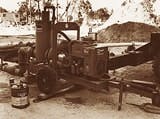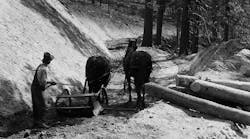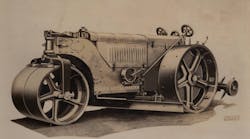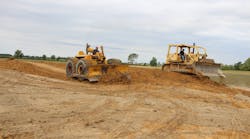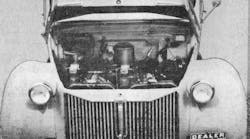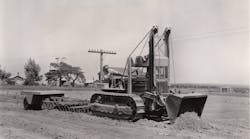Thompson Pump & Manufacturing was founded in Port Orange, Fla., in 1970 by George A. Thompson and his two sons, Bill and George Jr. Previously, George Sr. had extensive experience in the dewatering industry, and had worked on numerous large projects including the Vehicle Assembly Building and launch pads at Cape Canaveral, Fla. As he gained experience in the field by working first-hand on solving dewatering problems, he found deficiencies in pumping products then available on the market, and thought he could improve them with some engineering modifications. He also detected a need for specialized pumps that could perform tasks beyond the capabilities of existing equipment. So George Sr. decided to get into the pump-manufacturing business himself.
After establishing the company, George Sr. put his mechanical aptitude to work and was soon inventing and patenting pump products that earned the company a reputation for innovation. In 1973, Thompson adapted the rotary pump for wellpoint dewatering — the first time a rotary pump had been used for this application. It was so successful that it became Thompson's most important product, and the company still maintains its leadership in this market. Also in the 1970s, Thompson invented the Vacuum Under-drain Pipe for dewatering under high vacuum. Instead of using the usual vertical wellpoint pipes, his method employed a series of horizontal pipes to drain large areas efficiently. Although an excellent idea, the system didn't work as well as it should because horizontal boring and directional-drilling technology was not sufficiently advanced. Following major advances in horizontal-drilling technology in 1994, Thompson was able to introduce its patented "FilterVac" pipe, working on similar principles to the earlier system, but this time with exemplary success.
In 1977, Thompson introduced its own version of vacuum-assisted, dry priming pumps that allowed standard pumps to prime without first filling the pump housing with water. It also enabled pumps to handle large amounts of air and reach higher heads for demanding applications.
Product innovation continued in the 1980s with the introduction of Thompson's hydraulic power units with submersible pump heads, mainly for use in mines or quarries with high-head, high-lift applications. A patented, environmentally safe priming system called "Enviroprime" was launched in 1997 — a unique compressor-assisted priming system for safe sewer bypass and similar applications.
Over the years, the company has experienced tremendous growth. It now has 22 branches covering the southeastern United States as well as Canada and Mexico. Today, it is still a family-owned company. Thompson Pump manufactures many lines of pumps, including pumps with compressor-assisted or vacuum-assisted priming, high pressure jet pumps, and wellpoint pumps and systems. Its engine-powered portable pumps range in size from 2 to 18 inches for all applications.
*You can read more about the evolution of construction equipment in Keith Haddock's latest book, an updated version of his Earthmover Encyclopedia just out in bookstores. Also, consider a membership in the Historical Construction Equipment Association, www.hcea.net .

